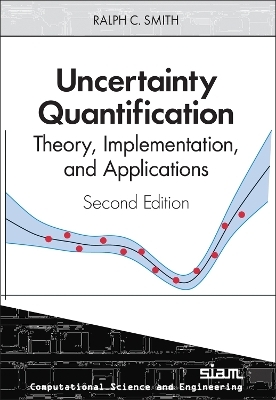
Uncertainty Quantification
Theory, Implementation, and Applications
Seiten
2024
|
2nd Revised edition
Society for Industrial & Applied Mathematics,U.S. (Verlag)
978-1-61197-783-7 (ISBN)
Society for Industrial & Applied Mathematics,U.S. (Verlag)
978-1-61197-783-7 (ISBN)
Uncertainty quantification is an important step in establishing the predictive accuracy of simulation models employed in a broad range of disciplines. The book provides a comprehensive and unified treatment of the mathematical, statistical, and numerical topics required to perform uncertainty analysis for models arising in a range of applications.
Uncertainty quantification is an important step in establishing the predictive accuracy of simulation models employed in a broad range of disciplines. The book provides a comprehensive and unified treatment of the mathematical, statistical, and numerical topics required to perform uncertainty analysis for models arising in a wide range of applications.
Expanded and reorganized, the second edition represents advances in the field over the last decade.
It contains new chapters on random field representations, observation models, parameter identifiability and influence, active subspace techniques, and statistical surrogate models.
The chapter on local sensitivity analysis has been rewritten to focus on the use of sensitivity equations, complex-step approximation, adjoint methods, and parameter subset selection techniques to ascertain parameter influence.
It contains four times the number of exercises and many new examples, several of which include data.
UQ Crimes throughout the text identify common misconceptions and guide readers entering the field.
An ancillary website contains MATLAB codes.
Uncertainty quantification is an important step in establishing the predictive accuracy of simulation models employed in a broad range of disciplines. The book provides a comprehensive and unified treatment of the mathematical, statistical, and numerical topics required to perform uncertainty analysis for models arising in a wide range of applications.
Expanded and reorganized, the second edition represents advances in the field over the last decade.
It contains new chapters on random field representations, observation models, parameter identifiability and influence, active subspace techniques, and statistical surrogate models.
The chapter on local sensitivity analysis has been rewritten to focus on the use of sensitivity equations, complex-step approximation, adjoint methods, and parameter subset selection techniques to ascertain parameter influence.
It contains four times the number of exercises and many new examples, several of which include data.
UQ Crimes throughout the text identify common misconceptions and guide readers entering the field.
An ancillary website contains MATLAB codes.
Ralph C Smith is a Distinguished University Professor of Mathematics at North Carolina State University. He has served in various leadership roles within SIAM and the ASME, including Chair of the SIAM Activity Groups on Control and Systems Theory and Uncertainty Quantification and Editor-in-Chief of the SIAM Book Series on Advances in Design and Control. He is the recipient of the 2016 ASME Adaptive Structures and Material Systems Award and the 2017 SPIE Smart Structures and Materials Lifetime Achievement Award. He is a Fellow of SIAM and the ASME.
| Erscheinungsdatum | 03.09.2024 |
|---|---|
| Reihe/Serie | Computational Science and Engineering ; 30 |
| Verlagsort | New York |
| Sprache | englisch |
| Themenwelt | Mathematik / Informatik ► Mathematik ► Angewandte Mathematik |
| Mathematik / Informatik ► Mathematik ► Statistik | |
| ISBN-10 | 1-61197-783-5 / 1611977835 |
| ISBN-13 | 978-1-61197-783-7 / 9781611977837 |
| Zustand | Neuware |
| Informationen gemäß Produktsicherheitsverordnung (GPSR) | |
| Haben Sie eine Frage zum Produkt? |
Mehr entdecken
aus dem Bereich
aus dem Bereich
Buch | Softcover (2024)
Springer Vieweg (Verlag)
37,99 €
Buch | Softcover (2024)
Springer Vieweg (Verlag)
44,99 €
für Ingenieure und Naturwissenschaftler
Buch | Softcover (2024)
Springer Vieweg (Verlag)
34,99 €


